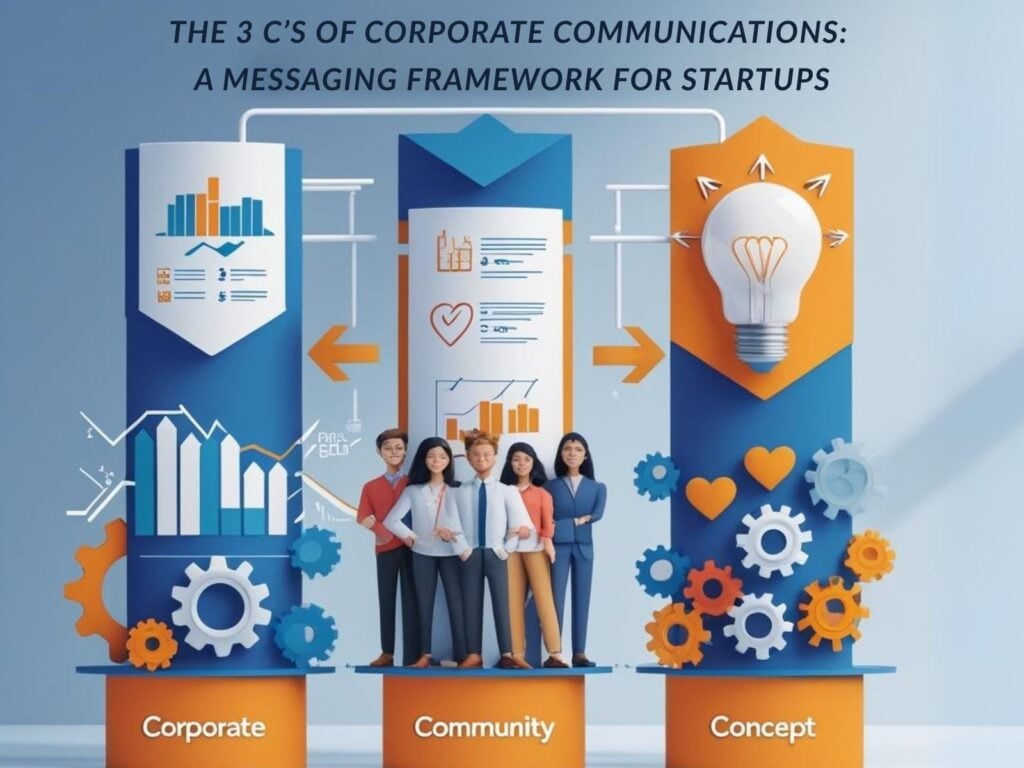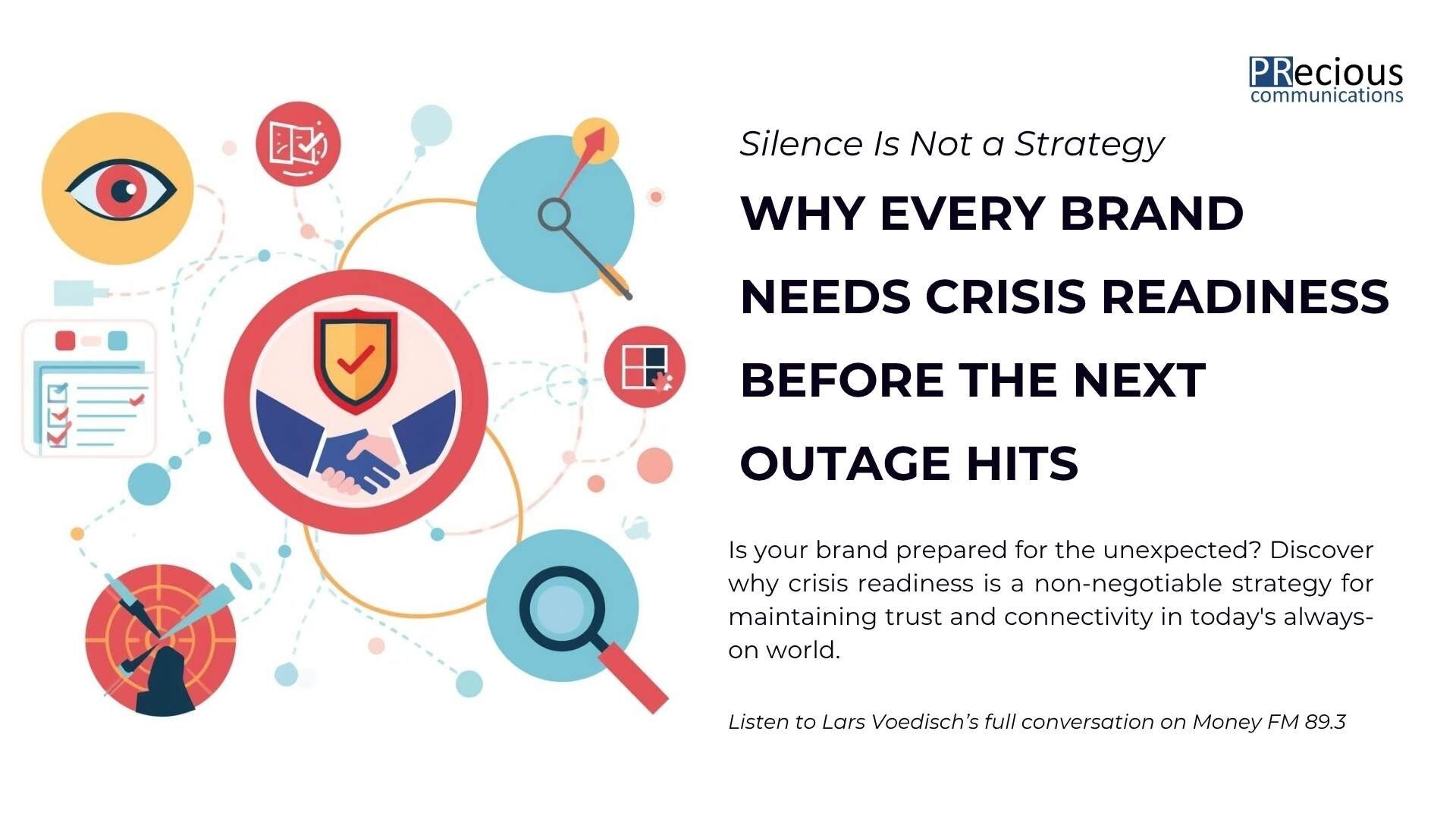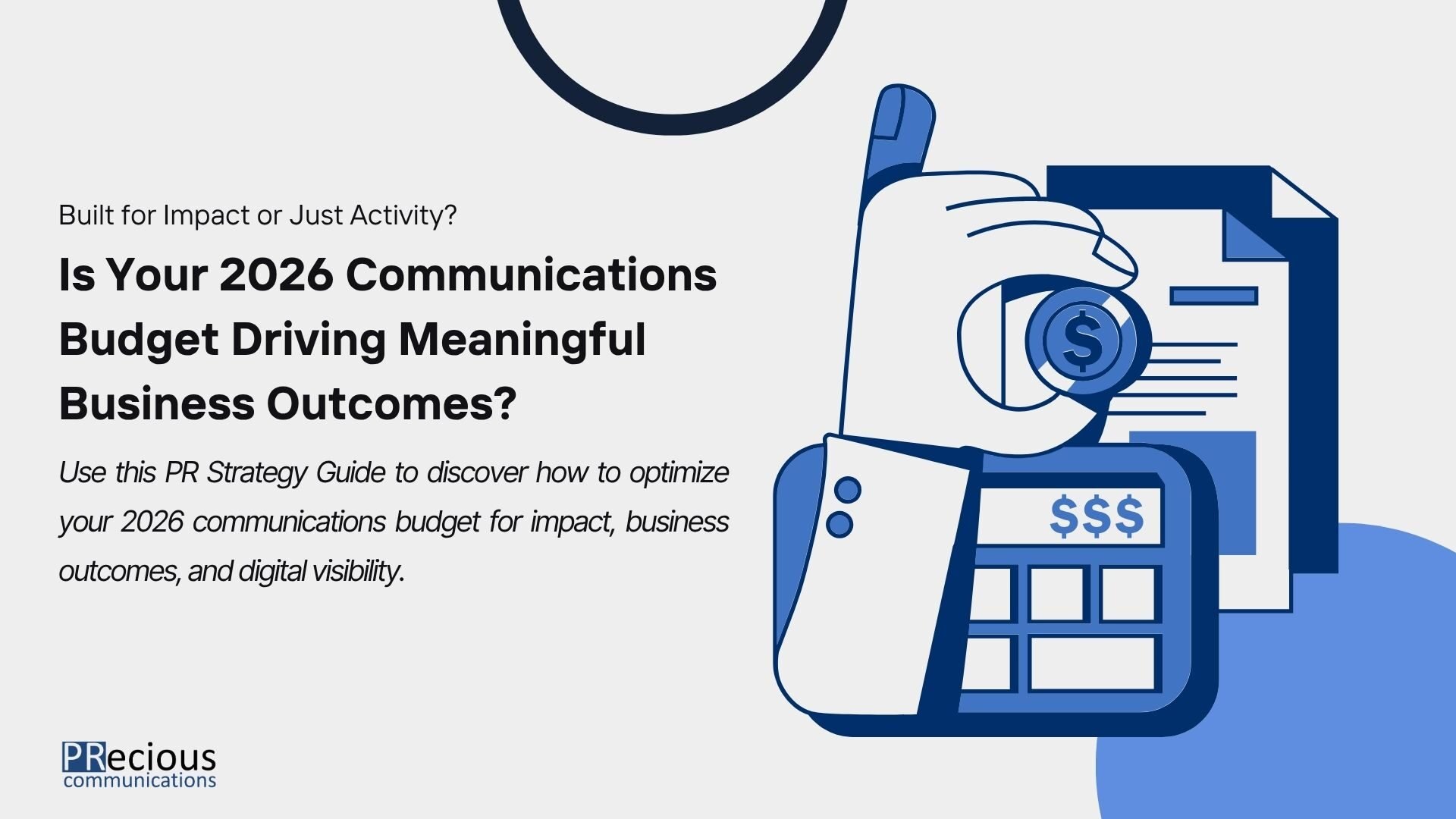PRecious Sparks is the growth partner for Southeast Asia’s emerging industries. To help startups and other fast-growing companies navigate today’s tricky landscape, we have introduced our thought leadership series called Reigniting the Sparks. Through this series of articles, we will explore why a strong communications strategy matters for high-growth organisations. The second part of the series focuses on messaging strategy.
The Southeast Asian startup ecosystem is many things—promising, vibrant, and dynamic. However, the adjective that best describes the current landscape is ‘evolving’. Gone are the days of cheap capital and growth-at-all-costs mentalities. We are now in an era of leaner, sharper, and smarter startups where investors scrutinise every move, customers have become more selective, and talent gravitates toward companies with clarity and conviction.
In this new environment, startups don’t just need to move fast. They need to communicate smartly. Because in a noisy and competitive market like Southeast Asia, the message that lands is often the one that lasts.
Growth today is about value, sustainability, and differentiation—not just speed. Messaging plays a pivotal role in achieving this by helping startups:
- Stand out from competitors
- Build trust with stakeholders
- Attract the right mix of users, partners, and talent
Table of Contents: Messaging as a Growth Strategy for Southeast Asian Startups
- Introduction: Messaging is the New Growth Strategy for Startups in Southeast Asia
- The 3 C’s of Corporate Communications: A Messaging Framework for Startups
- Tailoring Messaging for Regional Diversity and Platforms
- Conclusion: Messaging as a Strategic Asset
- Winning in Southeast Asia: A Startup’s Messaging FAQ

The 3 C’s of Corporate Communications: A Messaging Framework for Startups
So how do you build messaging that drives real business outcomes? We’ve seen how companies with strong brand narratives are better positioned to attract investment, talent, and customers. A recent Prophet study on marketing-fueled growth in Southeast Asia even highlighted this long-term advantage.
The answer lies in a simple yet powerful framework: the 3 C’s of Corporate Communications: Corporate, Community, and Concept.
Take e-commerce aggregator Una Brands as an example. Their messaging masterfully balances the 3 Cs. Their Corporate narrative highlights operational efficiency and thoughtful expansion, appealing to regional investors. Their Community messaging focuses on empowering the smaller e-commerce entrepreneurs they acquire, and their Concept clearly communicates the value they add through scale and expertise.
Together, these pillars ensure your startup communicates with intent and clarity, creating a foundation for consistent storytelling, regardless of your size or stage.
- Corporate: This is where you talk about the business itself—your credibility and scale. Growth milestones, ambitions, market entry strategies, and funding rounds all fall under this pillar. It builds your business case.
- Community: This is how you humanise the brand. What problem are you solving? Who are you helping? What values drive your decisions? This messaging is especially powerful in Southeast Asia, a region with a beautifully diverse business landscape.
- Concept: This is where you talk about the product—your competitive advantage. What makes it different? Why does it matter? How does it deliver value? Whether your edge is price, innovation, speed, or user experience, this is essential for differentiation.
Tailoring Messaging for Regional Diversity and Platforms
A framework is only as effective as its application. When developing your messaging, remember the key rule: no one size fits all.
- Adaptability: Southeast Asia is a region of contrasts. Messaging that works in Singapore might not land in Vietnam. Your messaging must be flexible, with different proof points tailored to different markets. A logistics startup might highlight speed in Metro Manila but focus on affordability in rural Indonesia. As a 2024 Bain & Company report showed, 73% of consumers across ASEAN markets expect brands to reflect local context. Regional nuance is not optional; it is expected.
- Umbrella Message: Despite adaptation, all your communications should align with a single, cohesive message that blends the 3 C’s. This reinforces your brand and makes it easier for people to understand what you stand for.
- Delivery Media: According to Meltwater’s State of Social 2024 report, 89% of Southeast Asian startups are increasing investment in multi-platform storytelling. Each platform has its own expectations. For traditional media, offer data and founder insights. On social media, be visual and personal. You don’t need a new set of messages for each, but you do need a new way to frame it.
- Consistency Builds Trust: Messaging should not shift every few months. Even as your product evolves, your core narrative needs to feel steady and dependable. Sudden changes create confusion and erode credibility. When updates are needed, introduce them tactfully to reflect your business progress.
In 2025 and beyond, strong messaging is no longer a nice-to-have. It is a strategic asset. For startups navigating uncertainty, a clear and compelling story sharpens internal focus and projects external confidence.
By applying these messaging strategies, startups in Southeast Asia can effectively communicate their value, resonate with key stakeholders, and accelerate sustainable growth in this evolving ecosystem.
Ready to build a messaging strategy that drives growth? PRecious Sparks works with ambitious startups to craft compelling narratives that resonate in Southeast Asia.
Contact us to learn how we can help your startup shine.
Winning in Southeast Asia: A Startup’s Messaging FAQ
1. What is the ‘3 Cs’ framework for startup messaging, and is one ‘C’ more important than the others?
The ‘3 Cs’ framework helps build clear messaging by focusing on Corporate (business fundamentals and vision), Community (brand humanization and connection), and Concept (product differentiation). No single pillar is most important; success comes from balancing all three. This framework is scalable and can be used by startups of any size by focusing on authenticity and relevance.
2. Why is strong messaging often considered more critical than a large marketing budget?
Clear messaging aligns all stakeholders—including investors, customers, and employees—which maximizes the return on every marketing dollar spent. In competitive and diverse markets like those in Southeast Asia, effective messaging is essential for standing out, building trust, and attracting the talent and capital needed to grow.
3. How can startups adapt their messaging to be effective across diverse Southeast Asian markets?
Messaging must be adaptable to reflect the significant cultural, economic, and linguistic differences between countries like Singapore, Indonesia, and Vietnam. To ensure resonance, startups should localize their proof points, use regionally relevant stories and examples, and gather direct feedback from their target audience in each market.
4. How can a startup evolve its messaging over time without losing credibility?
The key is to maintain a steady core narrative while introducing changes gradually. Messaging should be consistently reviewed as the company grows and evolves, but abrupt, sudden overhauls should be avoided. Regular, clear updates are more trustworthy and less confusing for your audience.
5. What are the most effective channels for startup storytelling, and what is the advantage of using several?
An effective strategy combines traditional media, owned channels (like blogs and websites), and social media. Using multiple channels allows you to reach diverse audiences and engage them in their preferred formats. This multi-channel approach maximizes reach, strengthens brand presence, and ensures your message resonates more deeply.
Authored by Aniket Gupta, Associate Manager, PRecious Sparks. Connect with him on LinkedIn.
PRecious Sparks is the dedicated startup practice of PRecious Communications, an award-winning integrated communications agency with presence across Southeast Asia. Since 2019, we’ve helped over 200 startups and growth-stage companies build their communications strategies and achieve their business objectives. This article is part of our thought leadership series, Reigniting the Spark, exploring the critical role of a strong communications strategy for high-growth companies, especially startups.


